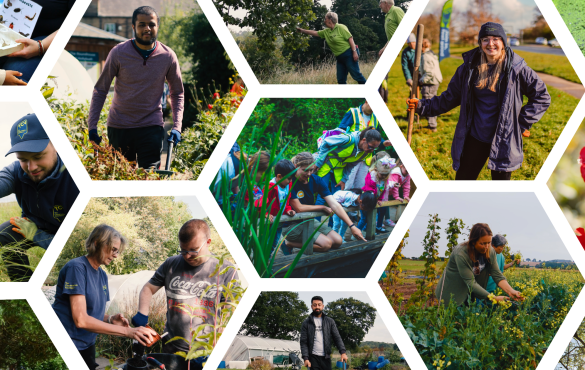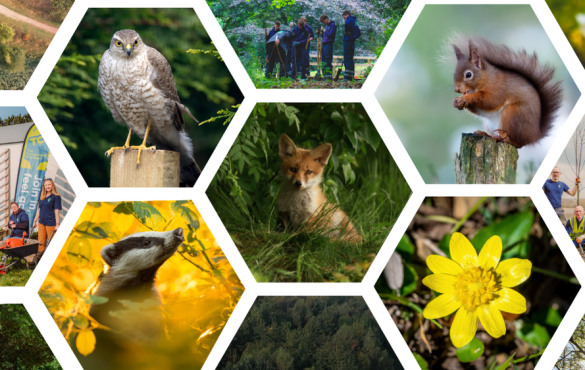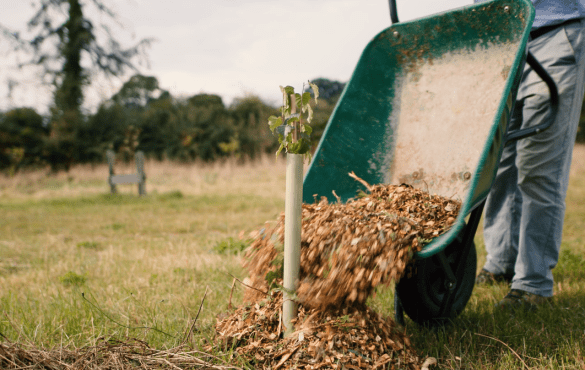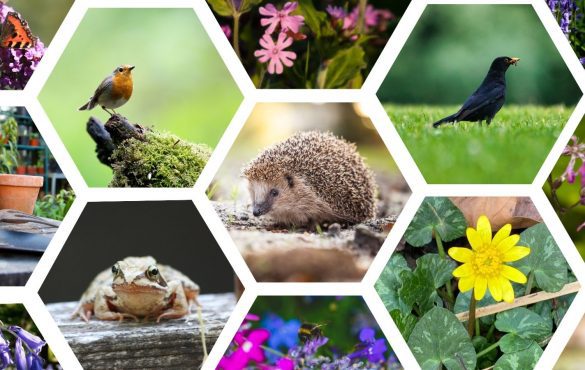Everything that lives on our planet depends upon the wonderful web of wildlife that fills the earth beneath us. That’s the message of the UN’s World Soil Day.
Soil is not just dirt. It teems with a community of plants, animals, fungi and micro-organisms – ranging from the familiar mole and earthworm, to the truly alien: a microscopic worm-eating fungus that catches its prey with a lasso!
The health of this invisible jungle is vital to us all. But what can we do in our every-day lives to protect the life in our soils? Here are some practical steps you can take:
1) Reduce, Reuse, Recycle. Even if you don’t have a garden, or look after a community green space, you can help save our soils by being careful what you throw away. The less that goes into landfill, the better for our soil and everything in it.
2) Grow trees – preferably deciduous native ones. Trees do a terrific job below ground as well as above. Decaying leaves provide nourishment for earthworms and microscopic invertebrates vital for the health of the soil while tree roots create an intricate network of underground habitats and bind the soil to prevent erosion. I Dig Trees offers free trees to help you get cracking.
3) Use plants that suit local conditions – vegetation that doesn’t need a lot of looking after will allow the other inhabitants of your soil too thrive too.
4) Lay down a log – decaying wood provides a home and nourishment for topsoil inhabitants. A little pile of stones will also provide shelter for creatures that aerate the soil like ants, woodlice and earth worms. If all you have is a patio or decking, plant pots or even bin bags full of stuff will provide useful shelter for earthworms.
5) Add water – a small pond can provide a habitat for toads which contribute to soil turnover, or create a mini-wetland: dig out a shallow area, lay down a plastic sheet and re-fill the hole.
6) Compost, compost, compost – save every scrap of vegetable and throw it on a compost heap. This will nourish your plants and soil life while reducing or eliminating the cost of buying commercial (peat-free) product.
7) Use less water-soluble fertiliser – organic materials that need to be broken down in the soil will encourage a healthy population of micro-organisms.
8) Make peace with pests – growing plants that are resistant to local pests will mean less need for chemicals which can harm wildlife above and below ground.
9) Take up Citizen Science – there’s still much we don’t know about the fantastic diversity of organisms in the soil (even the humble earthworm has its mysteries). Get recording!
10) Join in, feel good – it’s a jungle down there and TCV teams and community groups are out every day caring for it!




